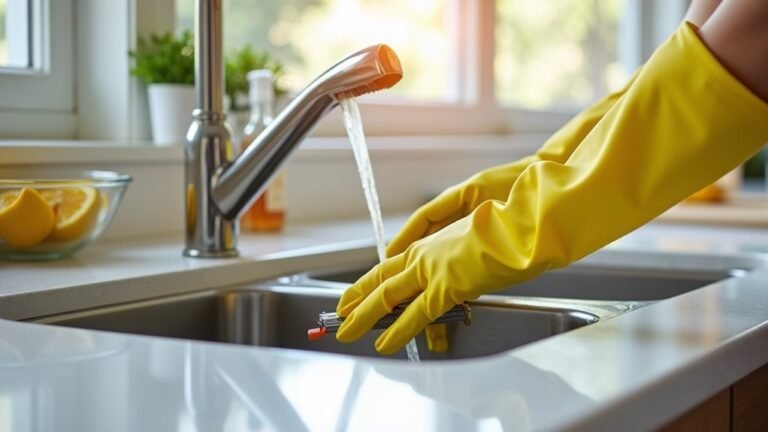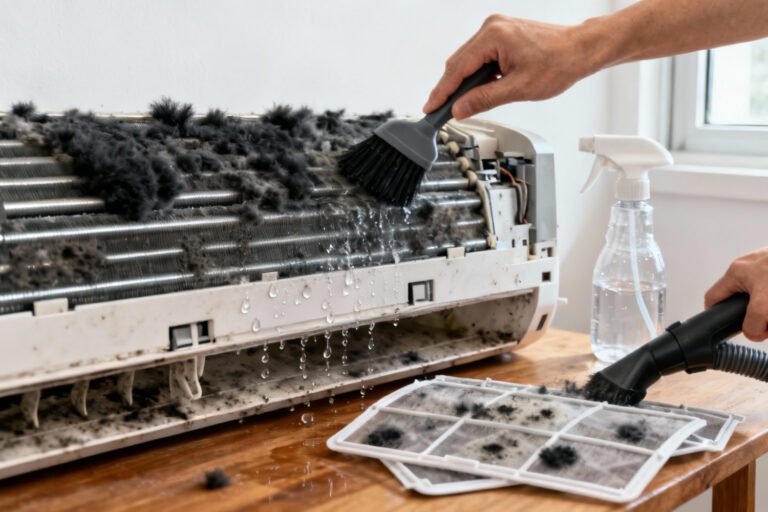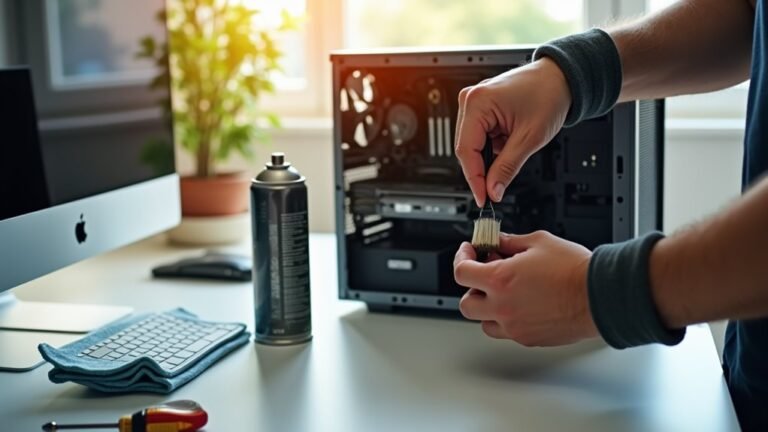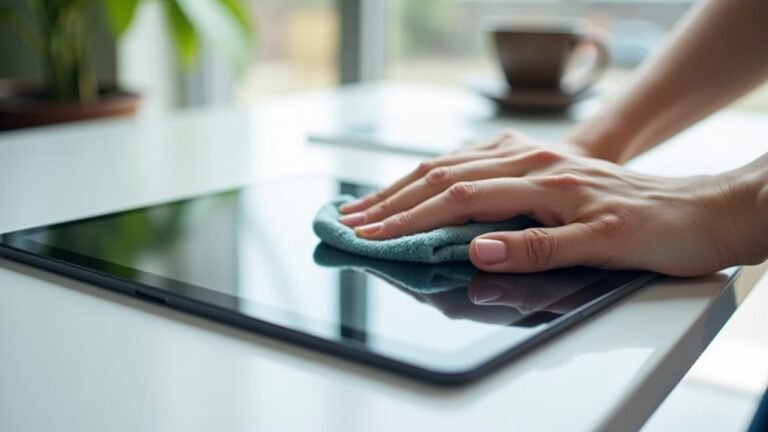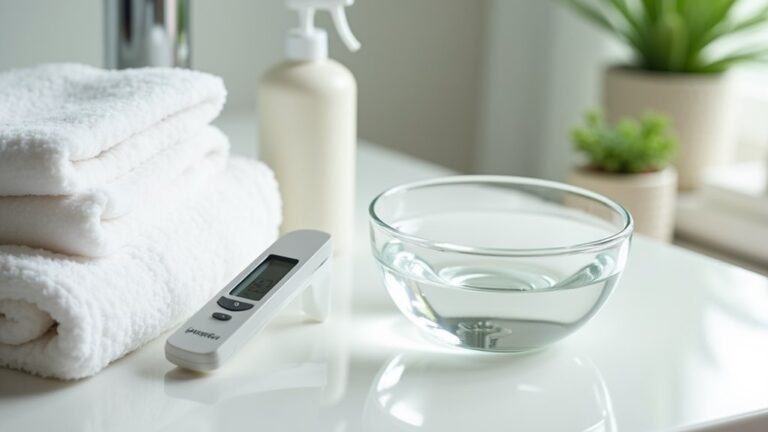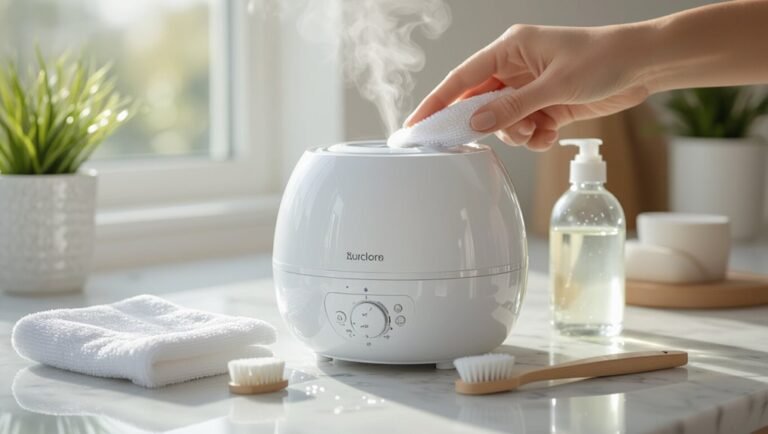Cleaning AC coils is simpler than many people think, and it can help cut down on energy bills and costly repairs. Your air conditioner has two sets of coils – one inside and one outside – that need regular cleaning to work their best. According to Energy Star, “A dirty coil reduces system efficiency by reducing airflow and heat transfer across the coil.” By keeping these coils clean, your AC won’t have to work as hard, which means more money stays in your pocket. With basic tools and the right steps, you can handle this important job at home and keep your system running smoothly.
Some of the links in this article may be affiliate links. If you make a purchase through these links, we may earn a small commission at no extra cost to you. Thank you.
Avoid AC System Overheating
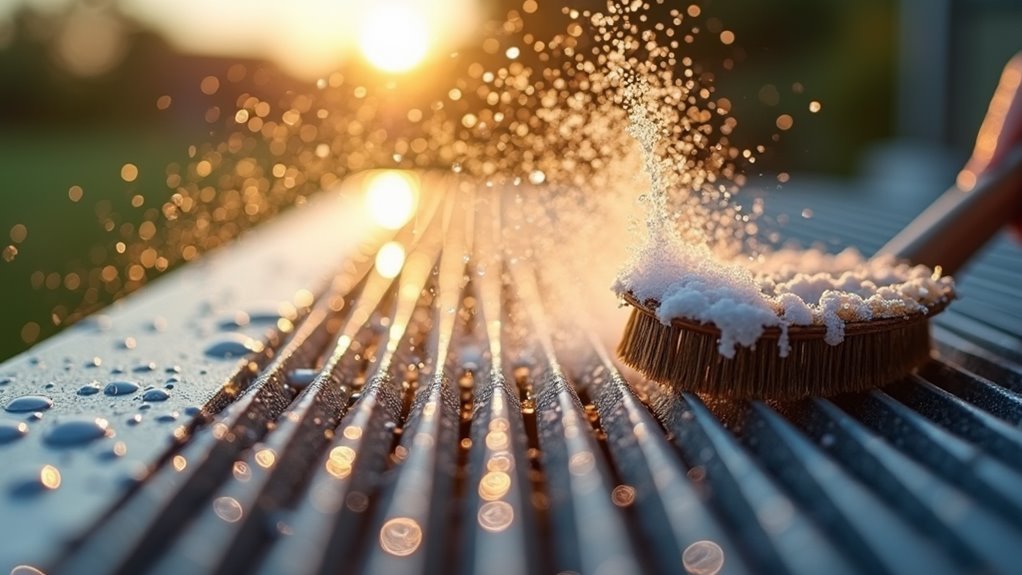
When your AC system overheats, it’s not just uncomfortable – it’s also a warning sign that your coils need attention.
Dirty AC coils can reduce system efficiency by up to 25%, forcing your unit to work harder and overheat.
Neglecting your AC coils leads to poor performance and system strain, as efficiency drops dramatically when dirt accumulates on vital components.
We recommend regular maintenance and cleaning of your AC coils to prevent continuous fan operation and component wear.
Let’s guarantee ideal airflow and prevent those costly overheating issues together.
Let’s explore the essential aspects of cleaning your AC coils, including the key steps and safety measures you’ll need to follow.
We’ll break down what you should and shouldn’t do during the cleaning process, making sure you maintain your system properly without causing any damage.
Our guidance will help you understand the complete process, from gathering the right tools to performing the final inspection, so you can keep your AC running efficiently.
Things to Do When Cleaning Ac Coils
Cleaning AC coils requires careful attention to safety and proper technique to maintain the unit’s efficiency and prevent damage. The process involves systematic steps that protect both the equipment and the person performing the maintenance, while ensuring thorough cleaning that will improve the system’s performance and longevity.
- Power off the system – Cut electricity at the breaker box to eliminate shock hazards
- Remove access panels – Carefully detach covers to expose the coils for cleaning
- Clear loose debris – Use vacuum with brush attachment to remove surface dirt and dust
- Apply cleaning solution – Use approved coil cleaner on stubborn dirt and grease buildup
- Gently brush coils – Work with soft brush in direction of fins to avoid bending
- Rinse thoroughly – Spray carefully with water to remove cleaning solution residue
- Check drain pan – Clean and verify proper drainage to prevent water accumulation
- Dry completely – Allow all components to dry before reassembly
- Replace panels – Secure all access covers properly to maintain system seal
- Test operation – Restore power and verify normal system function
Things to Avoid When Cleaning Ac Coils
When cleaning AC coils, it’s essential to employ proper techniques and avoid common mistakes that could potentially damage your HVAC system and compromise its performance.
Improper cleaning methods can lead to costly repairs, reduced efficiency, and even complete system failure, making it vital to understand what practices to avoid during the maintenance process.
- High-pressure water spray – Can bend or damage delicate coil fins and force water into areas that should stay dry
- Chemical cleaning solutions that are harsh or abrasive – Can cause corrosion and deterioration of the metal components
- Cleaning while system is operating – Creates safety hazards and risks electrical shock or mechanical injury
- Incomplete debris removal from drain pan – Leads to blockages, water overflow, and potential mold issues
- Aggressive brushing or scraping – Can destroy fin alignment and restrict proper airflow through the coils
Steps
Cleaning AC coils is a critical maintenance task that helps maintain your system’s efficiency and extend its lifespan.
Regular cleaning prevents dirt buildup that can reduce airflow and cause your unit to work harder, ultimately leading to higher energy costs and potential system failures.
When done correctly, this process removes accumulated debris, dust, and organic matter that can impact your AC’s performance.
Step 1: Turn off power to the AC unit at the breaker box and wait for system to cool completely
Step 2: Locate and remove the access panel to expose the evaporator coils
Step 3: Inspect coils for visible damage or excessive dirt accumulation
Step 4: Vacuum the coils using a soft brush attachment to remove loose debris
Step 5: Mix mild detergent with water and apply to stubborn dirt or grease
Step 6: Allow cleaning solution to sit for 5-10 minutes to break down buildup
Step 7: Rinse coils thoroughly with clean water, avoiding electrical components
Step 8: Let coils dry completely
Step 9: Replace access panel securely
Step 10: Restore power and test system operation
Final Thoughts
Maintaining your AC coils through regular cleaning isn’t just about following a checklist – it’s an investment in your system’s longevity and performance.
By keeping your condenser coils free from dirt or debris, you’ll keep your HVAC system running efficiently, leading to substantial energy savings.
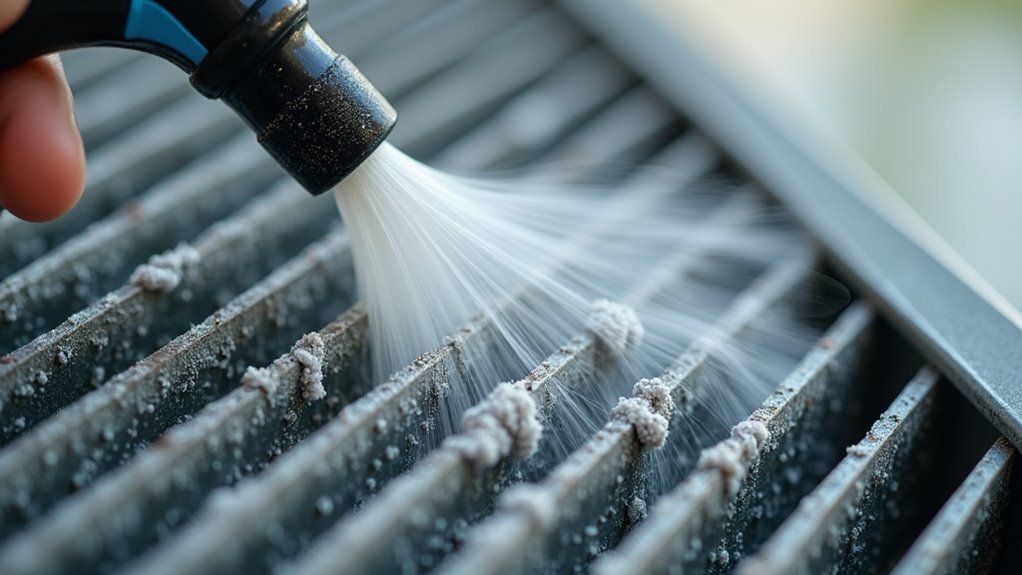
Maintaining clean AC coils is a vital yet often overlooked aspect of home maintenance that can save you money and extend your system’s lifespan. The simple act of annual coil cleaning can boost efficiency by up to 25%, leading to noticeable reductions in your energy bills.
While the cleaning process requires attention to detail and careful handling, it’s a worthwhile investment of time and effort that helps prevent costly repairs and system failures down the line.
Don’t wait until you notice problems with your AC system – be proactive about coil maintenance. Schedule your annual cleaning during the off-season, gather the right tools, and follow proper cleaning procedures to keep your AC running at peak performance.
Your reward will be consistent cooling, improved air quality, and the peace of mind that comes with knowing you’re protecting your valuable HVAC investment.
Take action today by inspecting your AC coils and planning your next cleaning session. Your comfort, wallet, and AC system will thank you for it.

